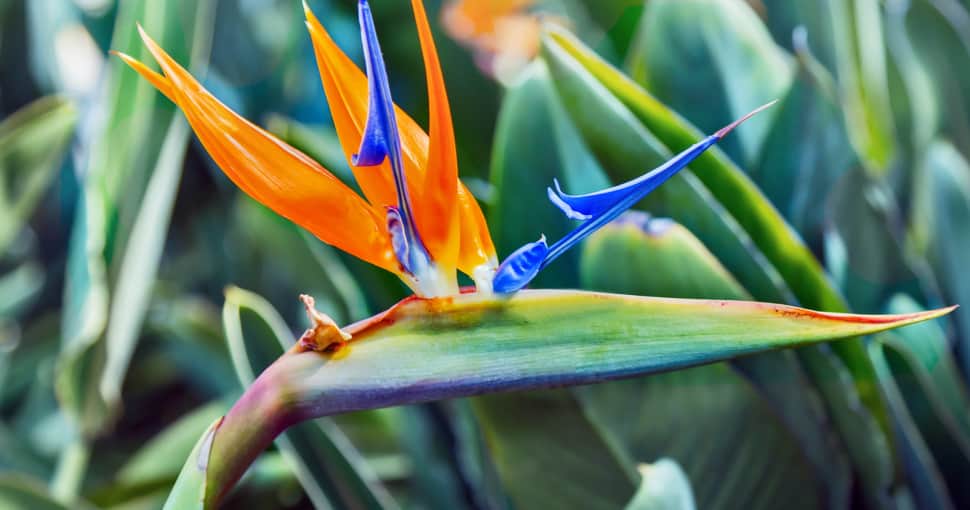In Georgia, you do not only have to worry about dangerous pests that may be destroying your yard. Instead, you also have to worry about poisonous plants that could be fatal to you, your children, and your pets if you are not careful.
Contents
- 1. Poison Sumac (Toxicodendron vernix)
- 2. Poison Ivy (Toxicodendron radicans)
- 3. Virginia Creeper (Parthenocissus quinquefolia)
- 4. Azaleas (Rhododendron)
- 5. Belladonna/Deadly Nightshade (Atropa belladonna)
- 6. Bird of Paradise (Strelitzia)
- 7. Bittersweet/Woody Nightshade (Solanum dulcamara)
- 8. Castor Oil Plant (Ricinus communis)
- 9. Chinese Lantern (Physalis alkekengi)
- 10. Chokecherry (Prunus virginiana)
- 11. Dumb Canes (Dieffenbachia)
- 12. Dogbane/Indian Hemp (Apocynum cannabinum)
- 13. Rosary Pea (Abrus precatorius)
- 14. Jimsonweed/Devil’s Weed (Datura stramonium)
- 15. Wolf’s Bane/Monkshood (Aconitum)
- 16. Morning Glory (Ipomoea)
- 17. Peace Lily (Spathiphyllum)
- 18. Poppy (Papaver somniferum)
- 19. Water Hemlock (Cicuta)
- 20. Mayapples (Podophyllum peltatum)
- 21. Stinging Nettle (Urtica dioica)
- 22. Poinsettia (Euphorbia pulcherrima)
- 23. Snowdrop (Galanthus)
If you have overgrown areas in your garden that are hard to reach, there is a high possibility that you have been harboring these plants. It is the duty of every homeowner as well as every citizen to identify poisonous plants so that they can keep themselves safe from illness and, worse, even death. Once you know what these poisonous plants look like, you must ensure that you do not touch them or consume them in any way.
In this article, we have covered 23 poisonous plants in Georgia. Some of these are common, while others are not. However, you need to know the kind of reaction you will have if you are in contact with each plant and how you can recognize and differentiate one plant from the other. We would recommend going through this list with your children as well so that they do not ingest anything by mistake. After all, we all know how curious children are- they love exploring the world with their mouths.
1. Poison Sumac (Toxicodendron vernix)
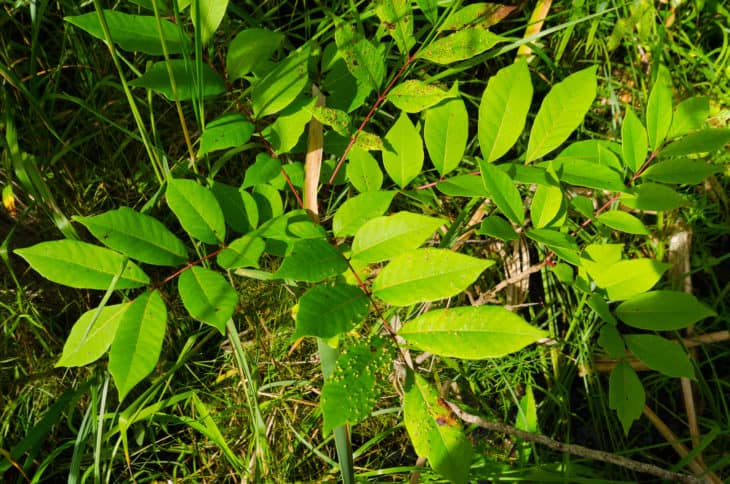
Poison Sumac can leave painful, big rashes on your skin that can turn into scars and leave marks for many years. Even though this plant may look pretty, it should not be ingested. It usually grows in swampy, humid areas and has a 13-leaf stem that you need to be aware of. It may even have a hint of red.
2. Poison Ivy (Toxicodendron radicans)
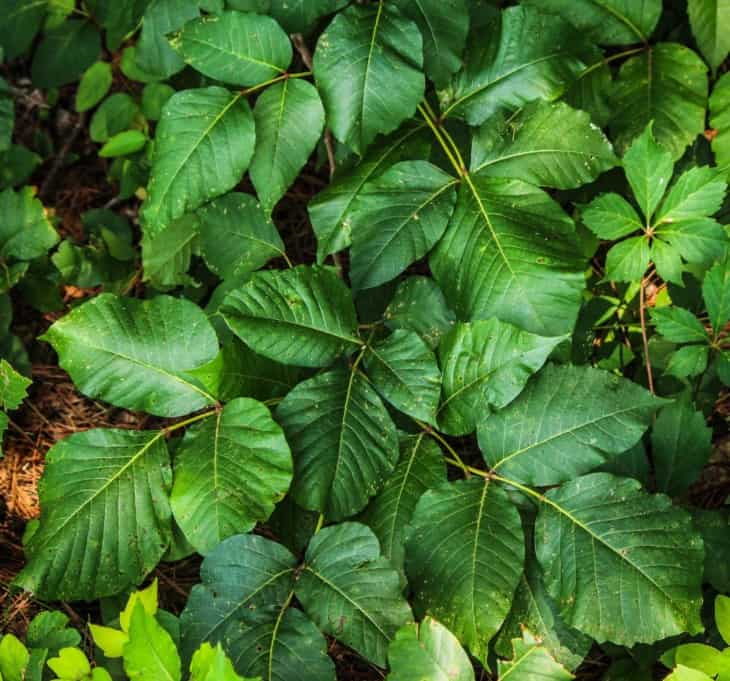
Native to Eastern North America and Asia, this plant can look like a trailing shrub or a bush. It has hair that is red in color and vines that are poisonous to pets and humans. Poison Ivy can be identified by looking for three leaflets that are shaped like almonds and leaves that range from light green to bright red to green.
3. Virginia Creeper (Parthenocissus quinquefolia)
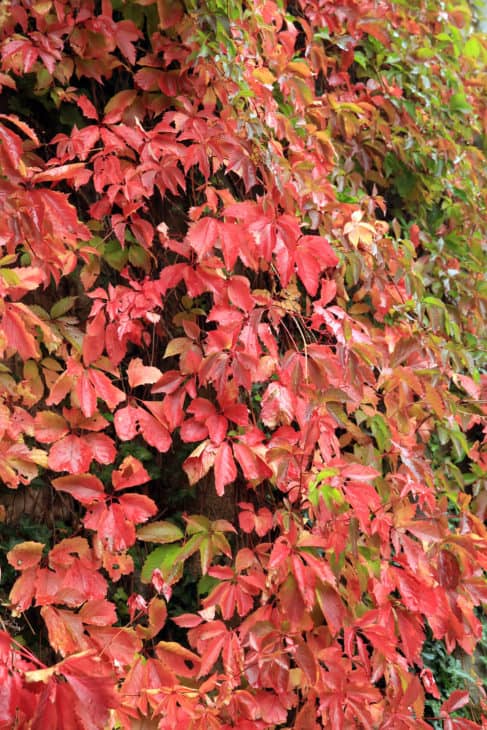
The Virginia creeper is an ivy with five leaves. Usually, it colors in early fall. The fast-growing creeper has five ovate leaflets that are purple in spring and turn to dull green in summer. This woody vine should not be eaten as it is highly toxic. It can cause bloody vomiting, abdominal pain, and a weak pulse. If ingested in large quantities, it can be deadly.
4. Azaleas (Rhododendron)
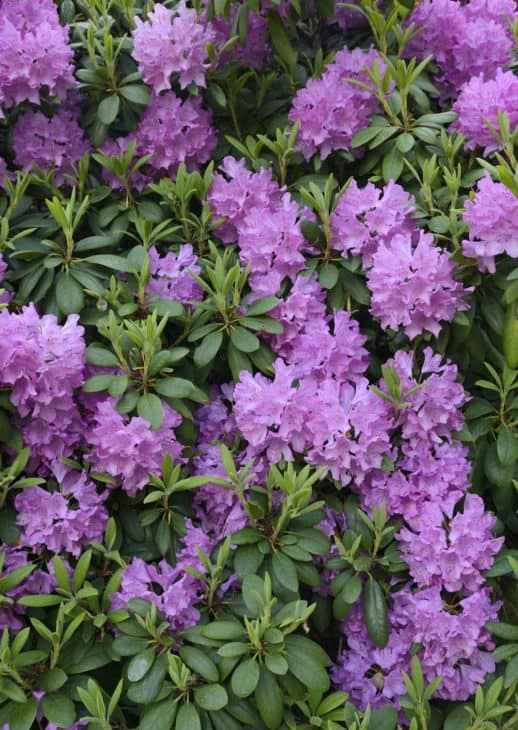
Azaleas are small to medium-large trees that have woody growth and red flowers. Even though it looks beautiful, swallowing big amounts of this plant can lead to fatal results. This plant is loaded with toxins known as grayanotoxins. The effects of ingesting this plant are different in humans and animals. It is toxic to cats and dogs and can make horses, sheep, and goats severely sick.
5. Belladonna/Deadly Nightshade (Atropa belladonna)
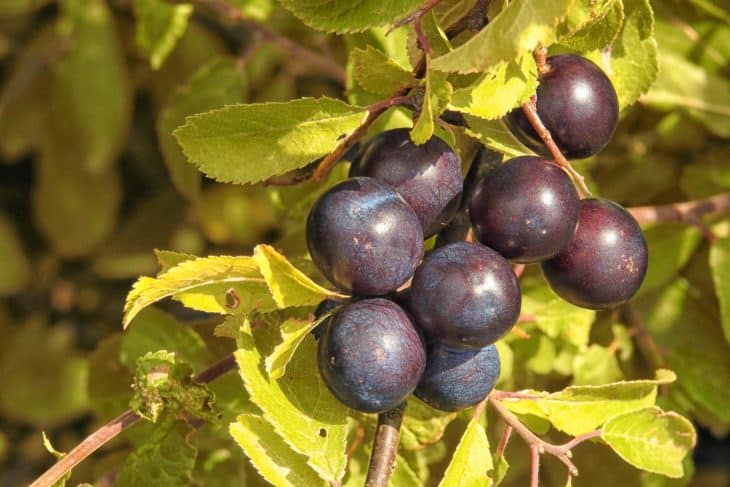
This is a bushy herb that usually grows in quarries and arid lands. It can be found in Western Europe as well as the Himalayas. It has green leaves and purple flowers that are shaped like a bell. These flowers can be orange, purple, red, white, or pink in color. This plant is toxic to all animals, except for rabbits and cattle.
Related: 8 Plants That Look Like Deadly Nightshade
6. Bird of Paradise (Strelitzia)
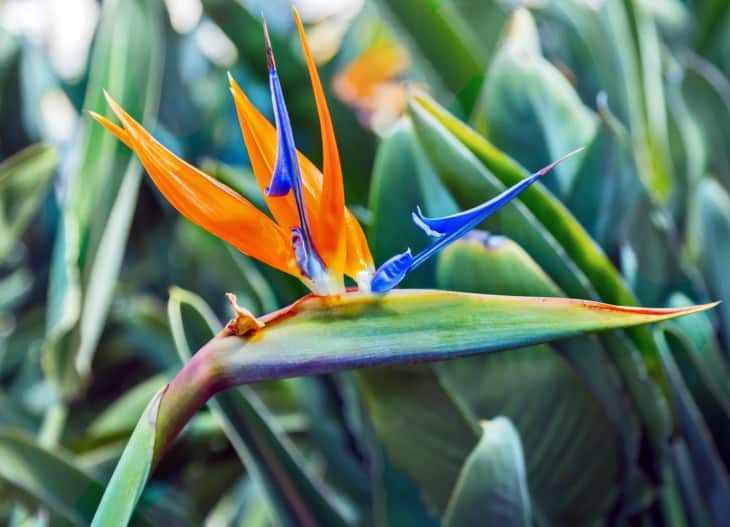
Strelitzia has thick roots and rounded leaf blades that are orange in color. Its leaves and stems resemble reeds. Bird of Paradise is known for its brightly colored flowers- the blue petals grow from a dull green spathe and are also called crane flowers. This plant is toxic to dogs, cats, and humans. Ingesting the plant’s flowers can cause dizziness and vomiting. See plants that looks like Bird of Paradise if you want to plant an alternative.
7. Bittersweet/Woody Nightshade (Solanum dulcamara)
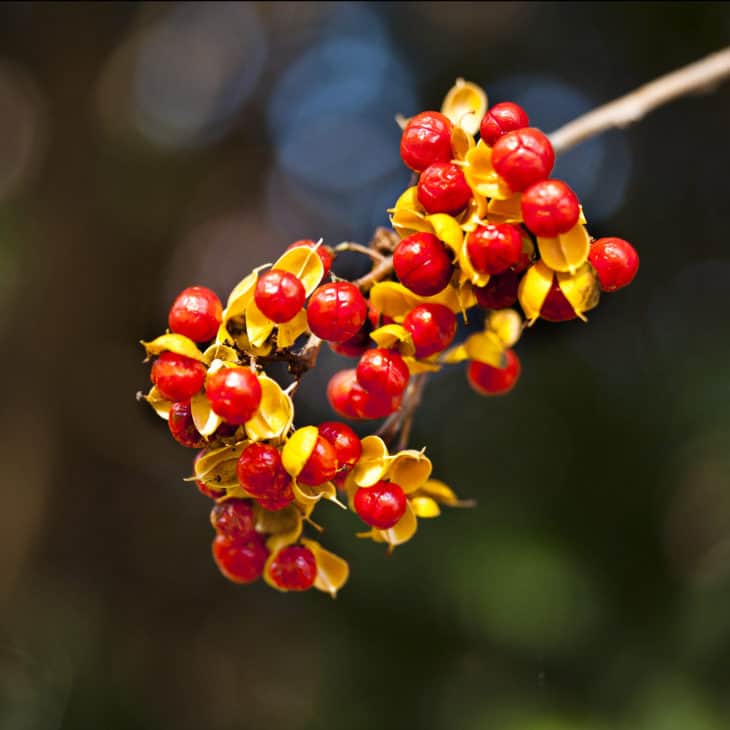
The Woody Nightshade has 3-20 loose clusters of star-shaped flowers. These are yellow and purple in color and have red berries for fruits. However, they are toxic to pets, livestock, and humans. Only birds can ingest them. They are usually found in wetlands and creeks, as well as roadsides and parks. The berries are poisonous if ingested by humans and can make them sick.
8. Castor Oil Plant (Ricinus communis)
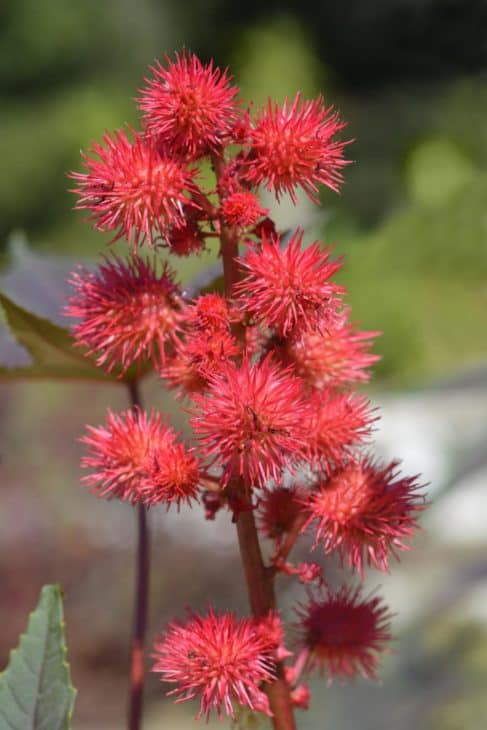
This flowering plant grows in tropical and warm-temperature regions. It has glossy green leaves and may even have blackish-purple or maroon leaves with white veins. This has been classified as one of the most toxic plants to humans as it contains ricin which can be fatal for humans if ingested even in the smallest amount. In fact, it has been classified as the most poisonous plant for humans.
9. Chinese Lantern (Physalis alkekengi)
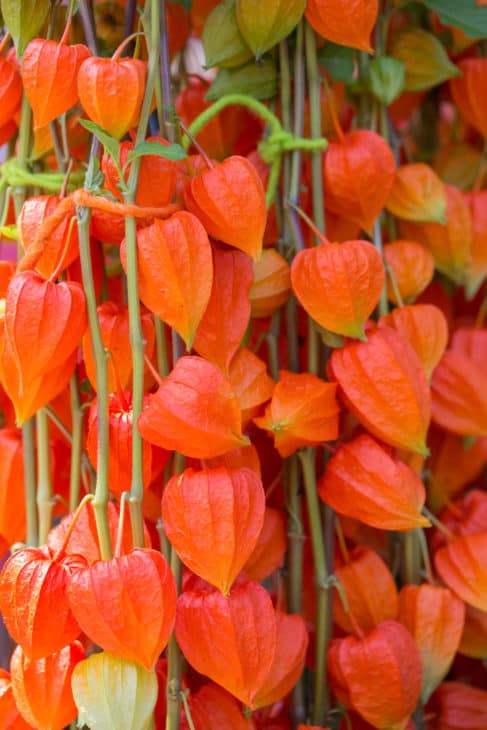
You can easily identify the Chinese lantern. It has bright orange or red paper that covers its fruit, almost looking like paper lanterns. The plant itself grows 40 to 60 cm tall, and its leaves grow 6 to 12 cm long and 4 to 9 cm wide. While the plant looks pretty, the unripe berries are toxic and can be fatal. However, the ripe fruit can be consumed.
10. Chokecherry (Prunus virginiana)
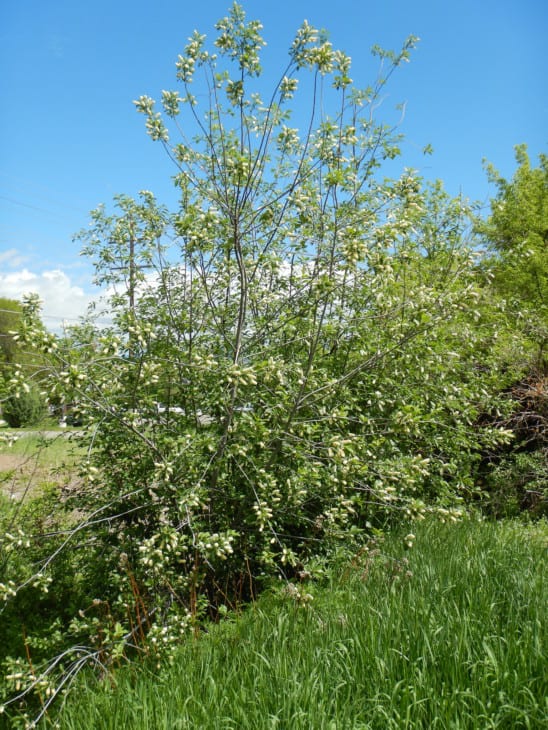
Chokecherry is a big shrub or small tree that comes with sharp-toothed leaves that have an oval crown. They become orange in the fall and golden-yellow in the sun. The leaves are poisonous and if ingested, can be fatal. This plant can be found on canyon slopes and along hillsides. Keep in mind that the fresh leaves, as well as the wilted leaves, can be fatal if consumed.
11. Dumb Canes (Dieffenbachia)
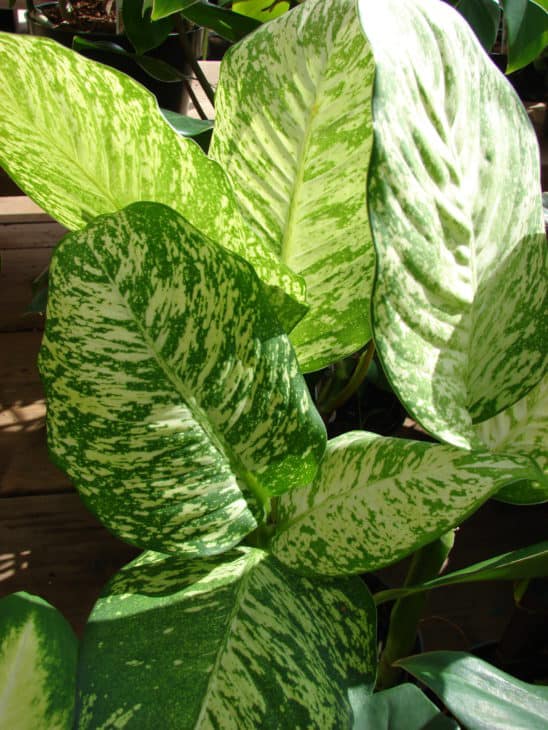
Most Dumb Canes are cream and green, white and green, or fully green. They can be striped or speckled. Even though it does not often bloom, when it does, the flowers look like a peace lily. If the plant is eaten, it can cause toxicity. It contains calcium oxalate, which can lead to toxicity if it is ingested or handled incorrectly.
12. Dogbane/Indian Hemp (Apocynum cannabinum)
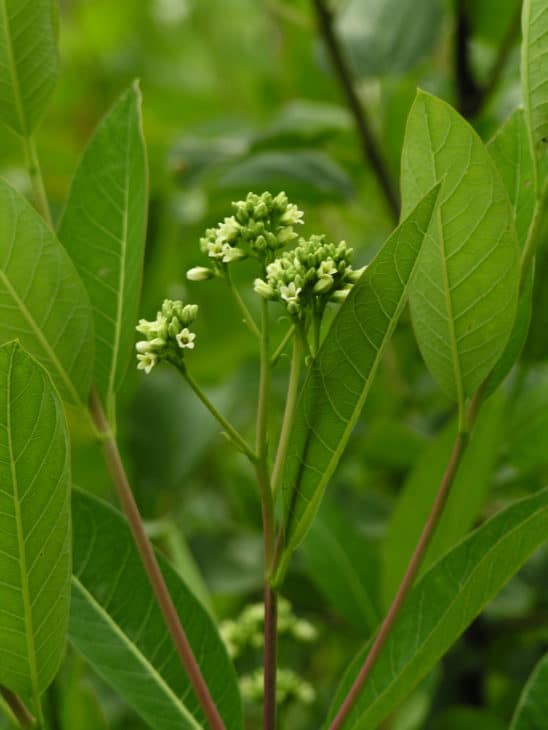
This plant has a purple stem that is erect and strong and can rise up to 4 feet. It has long, oval leaves and tiny cream-colored flowers. The leaves have a coating of white or bloom, and the seeds grow in spindle-shaped pods. Keep in mind that the green as well as dried plants are toxic and can be lethal for animals.
13. Rosary Pea (Abrus precatorius)
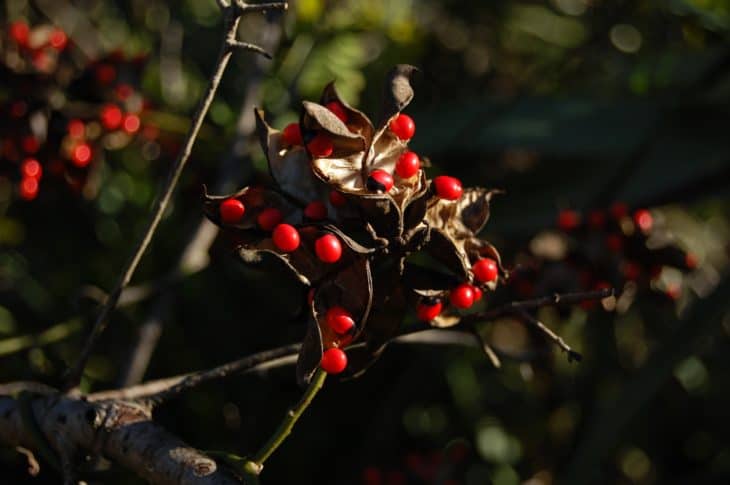
The Rosary Pea is a slender plant with leaves that are pinnate-leafleted. It is a climber that wraps itself around hedges, trees, and shrubs. It contains a lethal toxic that leads to the death of cells in the body. In fact, it is known to be one of the most toxic plants known to man. The outer coating of the seed only causes mild symptoms.
14. Jimsonweed/Devil’s Weed (Datura stramonium)
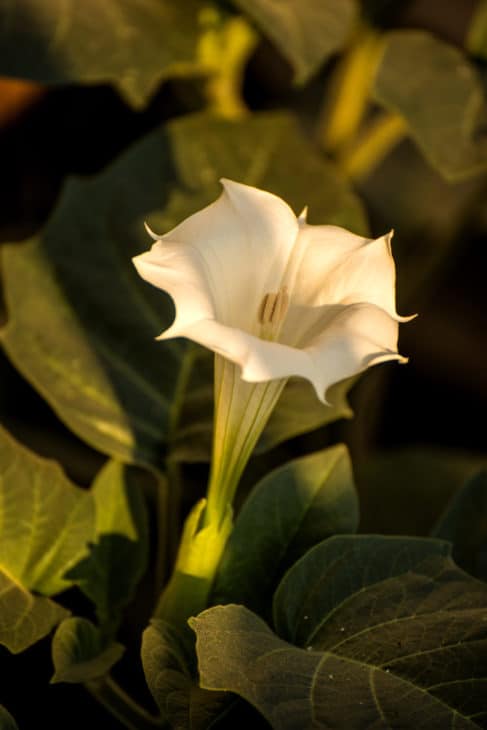
The Devil’s Weed is an erect herb that grows once a year. It has toothed leaves that are soft, while its violet or creamy flowers are shaped like a trumpet. The entire plant contains an alkaloid, making it completely poisonous. The active poisons in the plant are hyoscyamine, atropine, and scopolamine. In medicine, it is used for its hallucinogenic properties.
15. Wolf’s Bane/Monkshood (Aconitum)
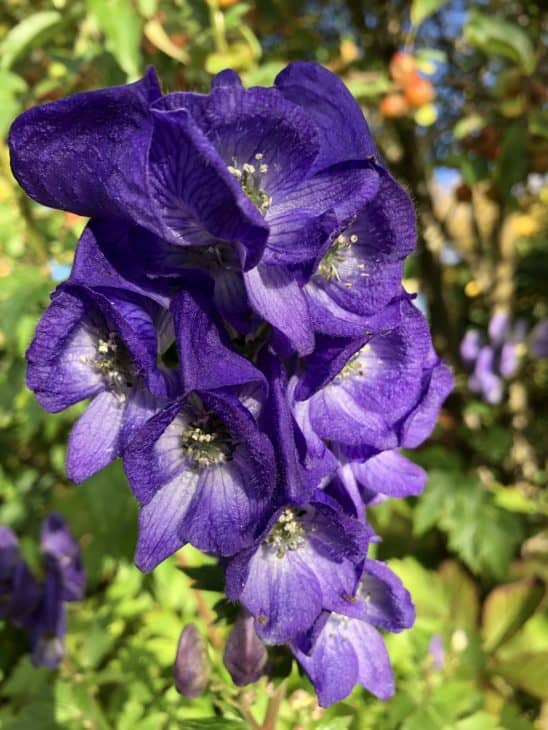
This plant has flowers shaped like a hood that grow in spike-like clusters. They can be white and yellow or blue and purple. Since it contains neurotoxins and cardiotoxins, it is extremely bad for humans and animals. The entire part, especially the roots, is full of toxins. Keep in mind that raw aconite plants can be extremely poisonous and can harm the heart.
16. Morning Glory (Ipomoea)
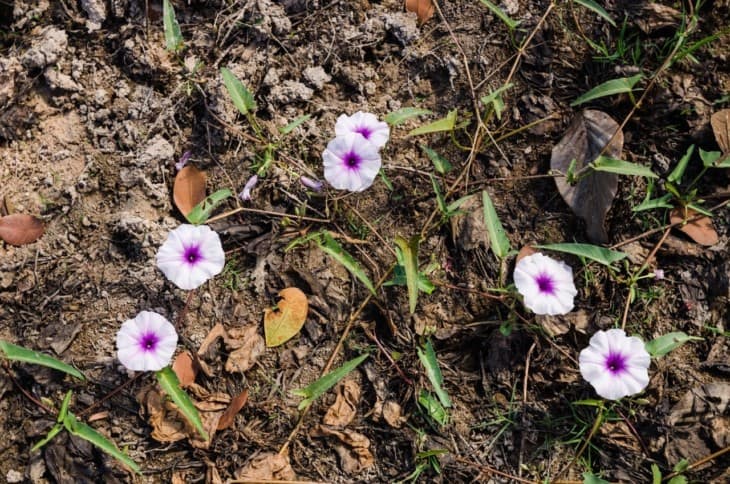
Morning Glory is a poisonous plant found in tropical as well as sub-tropical countries. It has heart-shaped leaves with thin stems and flowers that are shaped like a trumpet. You can find these flowers in white, purple-blue, pink, or magenta. They are fragrant but can poison livestock. The plant contains calystegines, swainsonine, and alkaloids, which can cause the death of cells.
17. Peace Lily (Spathiphyllum)
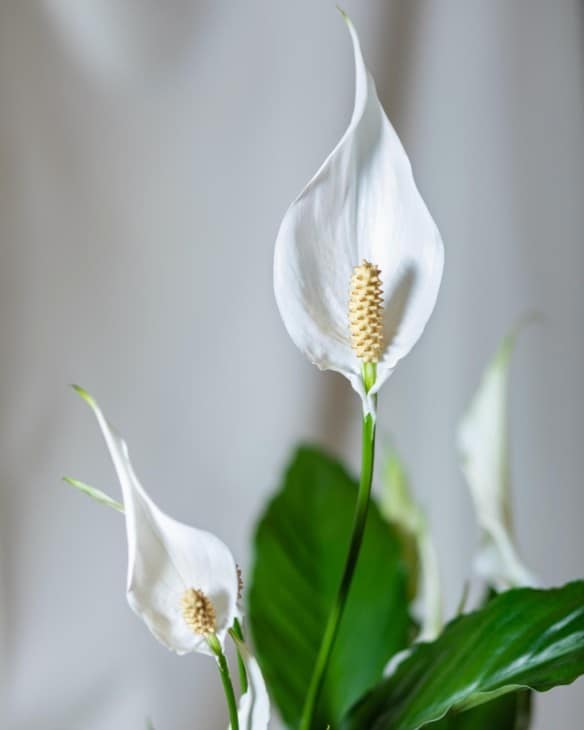
This house plant has white flowers and glossy green leaves. It is native to Central America and grows in humid environments. The leaves are shaped like a lance, and sometimes, the plant can grow unusual-looking flowers. When trying to identify this plant, make sure to look for the bract or white spathe. The Peace Lily is poisonous to pets, as well as humans.
18. Poppy (Papaver somniferum)
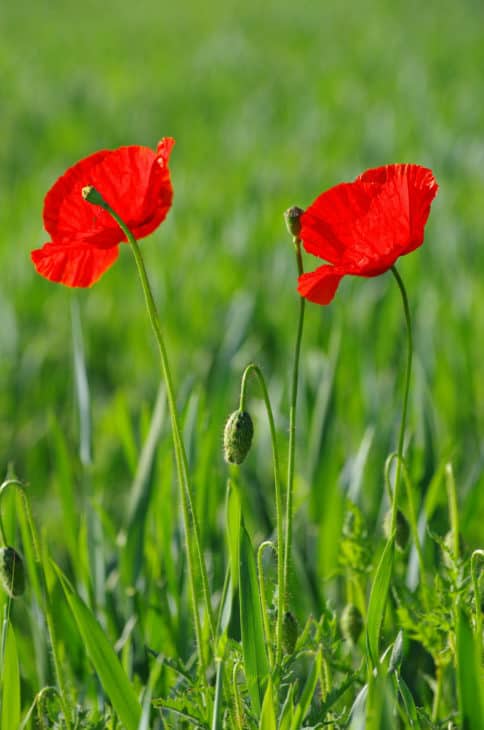
The annual herb called Poppy has a greenish-grey appearance with leaves and stems that look like they have coarse hairs on top. It can grow 40 inches tall. The leaves of this plant are lobed, and the topmost stem leaves clasp the stem. The cool thing about poppies is is that they close at night. If ingested, it can cause slow breathing, circulatory depression, as well as respiratory problems. In fact, many people in Tasmania have died from consuming Poppy.
19. Water Hemlock (Cicuta)
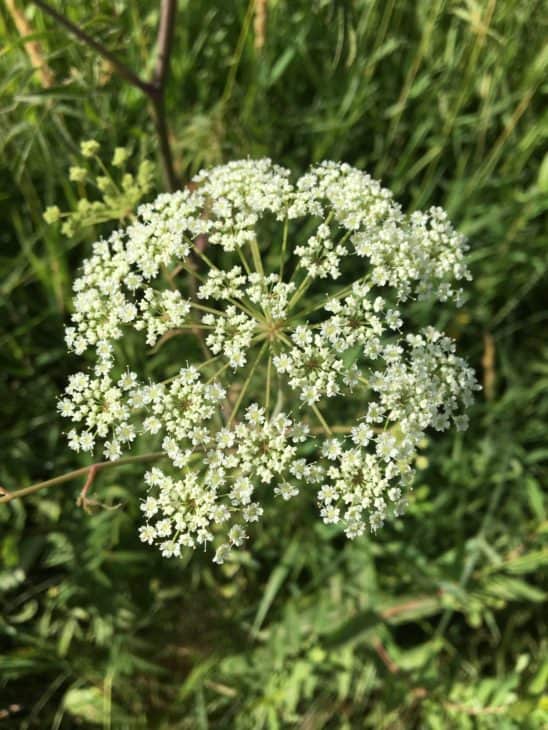
Water Hemlock has small white and green flowers that naturally grow in the shape of an umbrella. These plants can grow 8.2 feet tall, and they have small white and green flowers that are arranged in the shape of an umbrella. The leaves are fern-like and have teeth on the edges. This is a very poisonous plant, and if ingested, it can be fatal to humans.
20. Mayapples (Podophyllum peltatum)
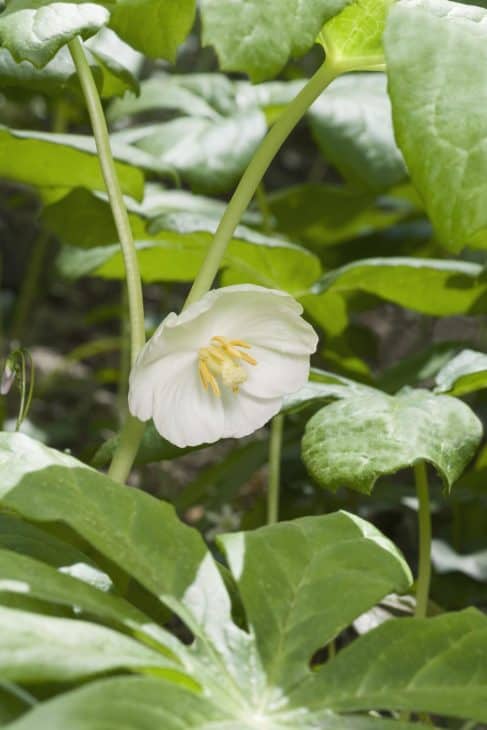
Mayapples are tall stems with umbrella-like leaves that are always furled, even when the stem grows in spring. The flowers can grow rose-colored or white, depending on the season and month. They are 2-3 inches wide and contain a total of six green sepals and up to nine waxy petals. If consumed, it can be highly toxic. In fact, it is medically used to treat a plantar wart.
21. Stinging Nettle (Urtica dioica)
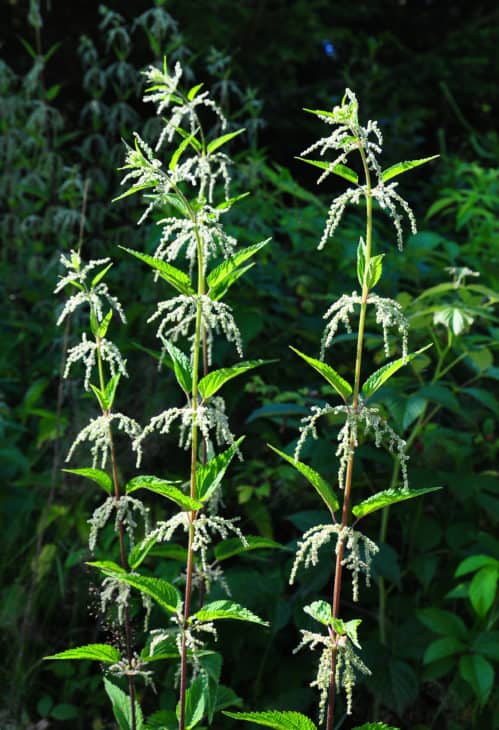
The Stinging Nettle plant has a cordate base and a terminal leaf that is very long. It can also bear small brow or green flowers. This odd plant should never be touched as it can be toxic. The young stems and leaves of the Stinging Nettle have hairs that contain formic acid, as well as other irritants. Hence, be careful never to touch this plant without gloves.
22. Poinsettia (Euphorbia pulcherrima)
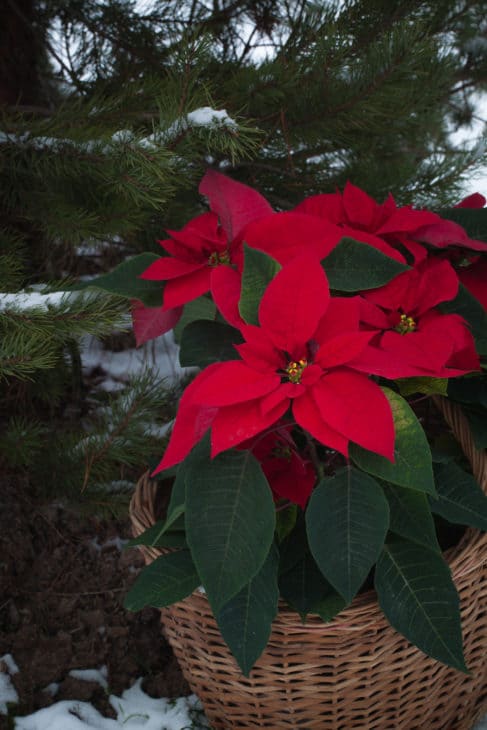
Some species of this plant have bracts that come in designs that can be bright orange, pink and white, white and green, or even white and red. The flowers look like roses. These plants are only mildly toxic to dogs and cats. The white, milky sap found in this plant contains diterpenoid euphorbol esters, as well as detergents similar to saponin, which can cause irritation to the skin and eyes if one directly touches the plant.
23. Snowdrop (Galanthus)
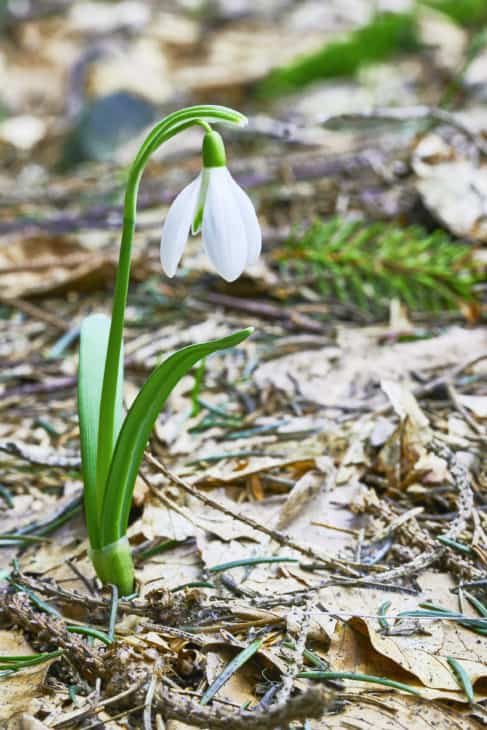
A rounded, huge plant, Snowdrop grows flowers white in spring with green marks that have a sharp contrast with the white color of the petals. If ingested in small amounts, it can cause low levels of toxicity. The leaves, stems, and bulbs contain phenanthridine alkaloids. Make sure that you keep a safe distance from the bubs as they have the highest concentration of alkaloids, making them particularly dangerous.

